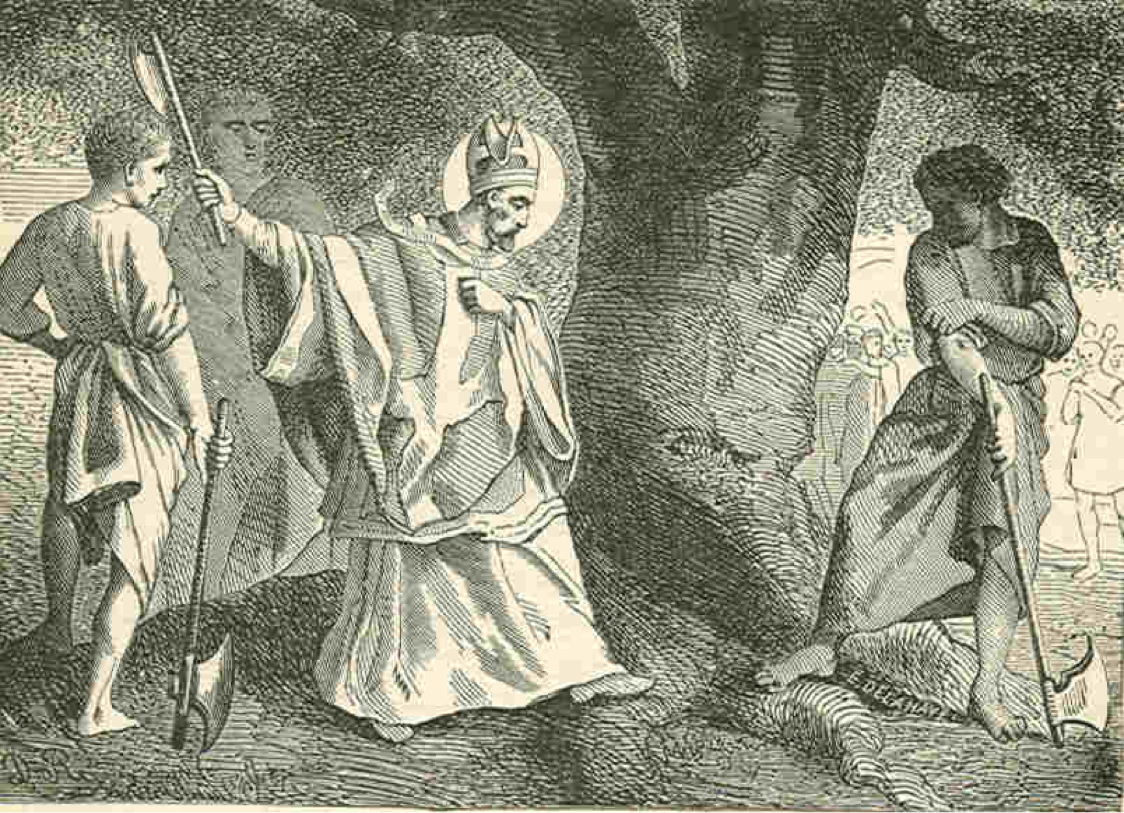The autobiography of John Paton, in my last blog, was a depiction of the impact of the Gospel in an isolated culture, but my second pick for "Great Books on Missions" is From Jerusalem to Irian Jaya: A Biographical History of Christian Missions, by Ruth A. Tucker, a tour de force showing the breadth of the missions movement since Pentecost.
If you are just beginning to read missions and church history, this book is a must. Many modern believers know little of how the Gospel crossed into Europe and beyond after the book of Acts. This book covers that saga through the blood, sweat, tears, and often death, of those that God used. Polycarp, Patrick, Boniface, and Francis Xavier took the faith and the Church to unreached places but are little remembered today.
One of my favorite entries is that of the account of Boniface ministering to Germanic tribes in Geismar in 723 A.D. Boniface boldly chopped down Thor’s giant Oak, a venerated object, to demonstrate that is was just a tree. Dr. Tucker quotes Willibald (probably) saying “the giant monster fell, its trunk burst asunder into four parts, which, as they fell to the ground, miraculously shaped themselves into the arms of the cross, each arm of equal length.”
Saint Boniface chopping down Thor's Oak, 723 AD
But Tucker does not stop there and that is one of the reasons I enjoy the book—all 486 pages. She then deals with Boniface’s doubts that such a bold act was an effective strategy. And shows his maturation as he begins reasoning to bring people to repentance rather than reverting to shows of force.
Ruth Tucker covers every epoch of missions’ effort with equal subtlety and vivid detail taken from the missionaries’ lives, ministries and struggles.
One of the best parts of the book is her pithy church history overviews, covering the basics of each epoch.
Part I: The Irresistible Advance
Part II: The “Great Century”
Part III: The Expanding Movement
Part IV: The Call for Specialization
Part V: The Shift Toward Nationalization
In our affluent cultural myopia the chapters on martyrs of the 20th Century are an antidote for our ills. And it is both humbling and encouraging to read of the worldwide advancement of the Gospel in the last 75 years by men like Rochunga Pudaite (India), Festo Kivengere (Uganda), and Phlip Teng (China).
This book has been out in Russian for at least 15 years and I have used it as a textbook in the mission courses I have taught in St. Petersburg. It lifts the veil on what it took to get the Gospel to us over 2,000 years, and it should be a tool and a stone of remembrance for every serious student of missions.
Remember your leaders (those who have gone before us in the faith), those who spoke to you the word of God. Consider the outcome of their way of life, and imitate their faith. Hebrews 13:7
Amen,
Blake Purcell


